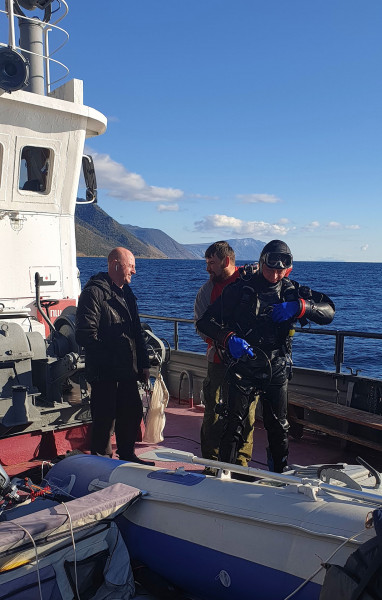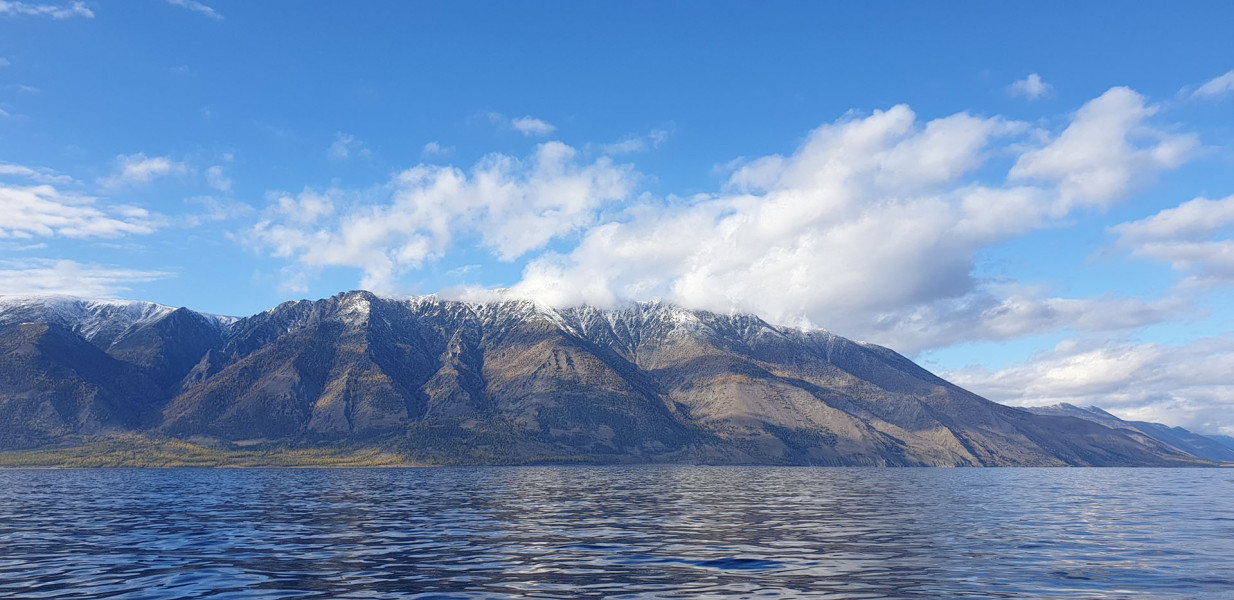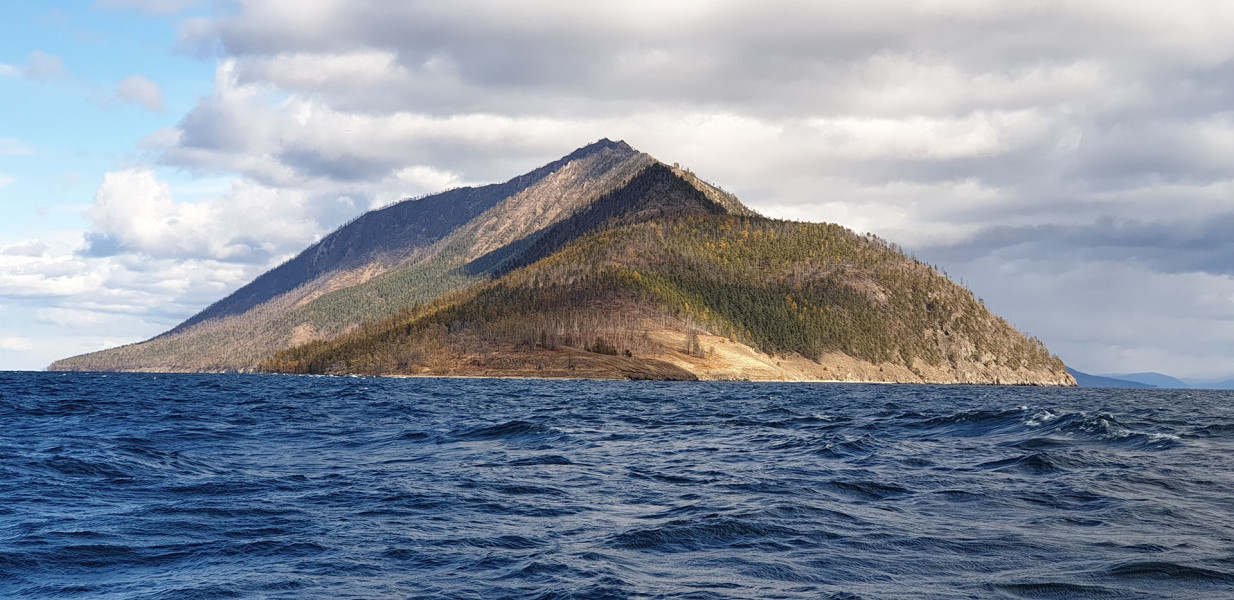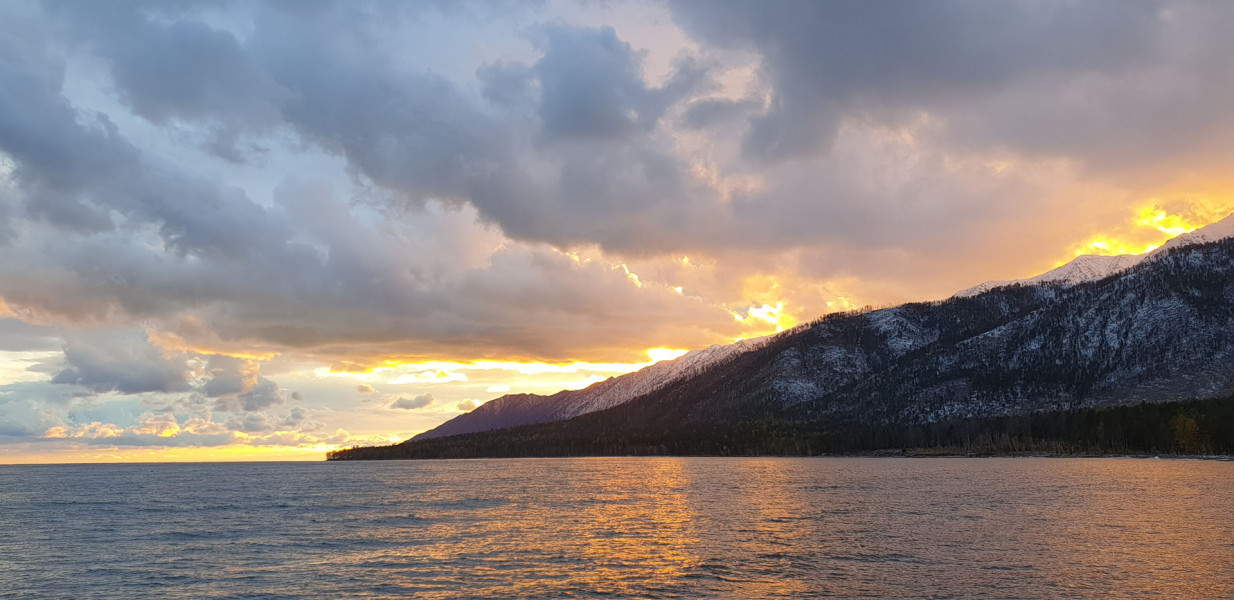Expedition on board the RV “Titov” from September 28 to October 04, 2022
From September 28 to October 04, 2022, the expeditionary works were carried out on board the RV “Titov” within the programmes “Study of seasonal and long-term transformations of the state of water bodies and watercourses in East Siberia in the context of climate change, geological environment and anthropogenic loads” (project № 0279-2021-0005) (directed by A. Fedotov), “The genomics of symbiosis. Investigation of interactions between host and consortia of microorganisms and parasites” (project № 0279-2021-0011) (directed by S. Belikov), and “Study of viral and bacterial communities as the basis for the stable functioning of freshwater ecosystems and an effective response in conditions of anthropogenic impact” (project № 0279-2021-0015) (led by O. Belykh).
The main aim of the expedition was information retrieval, data readout and setup of temperature loggers to obtain continuous year-round temperature data in the shallow lake zone (year-round temperature records have been maintained since 2017 at station transects at the depths of 4, 6, 12, 15 and 30 meters in different Baikal areas). The fieldworks were conducted at Circum-Baikal Railway Ulanovo Station, Ukhan Cape, Elokhin Cape, Turali Cape, Nizhnee Izgolovie Cape (Peninsula Svyatoy Nos), Aya Bay, Varnachka Valley, and Listvyanka Settlement.
For DNA isolation and its further shotgun sequencing as well as for RNA isolation and its further transcriptome sequencing, the sponge samples of the species B. bacillifera were collected in the areas of the Varnachka Valley (Bolshiye Koty) and Listvyanka Settlement. Larvae were selected from three samples of the Varnachka Valley and one sample of Listvyanka Bay; some of the samples were collected for histological analysis.
The samples of various forms of colonies were taken from two areas to study the morphological features of the bottom species of cyanobacteria (the Varnachka Valley (Bolshiye Koty) and Listvyanka settlement).
During the expedition, due to unfavorable weather conditions, strong northwest winds and waves up to 2 meters, we were forced to skip one station at Nizhnee Izgolovie Cape (Peninsula Svyatoy Nos).








